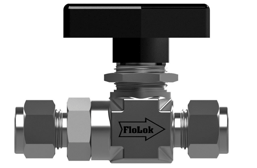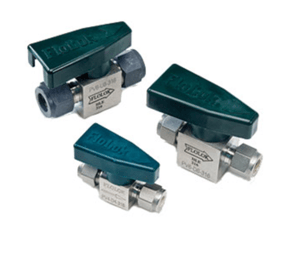Valves control the flow of water and other fluids through pipe systems. Pipe systems use different valve types depending on the fluid, the pressure, the application, and any other factors unique to that system. Two of the most common types are ball valves and plug valves. It is important to understand the differences between each valve type to ensure you choose the right one for your needs - in this blog, we’ll provide insights to help clarify the distinctions.
What Is an Instrument Ball Valve?
An Instrument ball valve is a shut-off valve that can completely stop or begin the flow of gas or liquid through a system. Ball valves contain a ball that sits securely in the valve seating with a hole, or bore, that goes through its center.
With a quarter turn of the handle, the ball rotates to expose the bore, allowing liquid or gas to easily travel through it. When the handle is turned back, the ball rotates into the closed position to stop flow. These valves are known for their long service life, and they tend to stay reliable even after long periods of disuse. Types of ball valves include encapsulated ball valves, full or reduced bore ball valves, floating ball valves, and trunnion mounted ball valves.
What Is an Instrument Plug Valve?
An Instrument plug valve are quarter turn rotary valves that use a bored cylindrical or tapered plug to stop or start fluid flow. In the open position, the bored plug is in line with fluid flow, allowing movement. In the closed position, the solid part of the plug prevents flow.
What Are the Differences Between Instrument Plugs Valves and Instrument Ball Valves?
Both of these valve types are control valves, which means they can be in an open or closed position to stop or start fluid flow. However, they are different in many key aspects, including:
- Construction. Ball valves feature a smaller spherical ball with a hollow center, while plug valves feature a larger cylindrical or conical plug with a bored passage. Since the disc in a plug valve is larger, it allows for a tighter shut-off. Plug valves are also smaller in size when compared to ball valves, allowing them to be easily installed in smaller units.
- Maintenance. Plug valves are easier to maintain as the plug can be easily removed and cleaned. Ball valves are more difficult to maintain since the ball is located deep within the valve and is not easily accessible.
- Longevity. Ball valves typically last longer than plug valves.
Choose Plug Valves and Ball Valves From SSP
Ball and Plug Valves are control valves that allow or prevent the flow of gas or liquid. Although similar, they have many distinctions regarding construction, maintenance, longevity, and more.
Instrument Ball Valves are more robust for demanding applications. Instrument Plug Valves are small and operate with low torque.
At SSP, we supply high-quality fittings, tubing systems, and valves. Our parts are made in the USA with first-rate speed, control, and precision.
Contact us today with any questions you may have, or browse our catalog of ball valves and plug valves to learn more about our products.


